
Mission Statement:
"To advance through research, education and symposia, an increased public awareness of the Cape Fear region's unique history."

Wilmington's 1898 Race Riot
Frequently Asked Questions
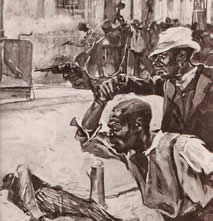
The following is presented in the interest of providing
accurate information and what is known about the
“race riot” (contemporaries referred to it as the
“Wilmington Rebellion”) and based upon the best
information available – primarily as close to the
conflict as possible and by credible eyewitnesses or
scholars. Most if not all responses to questions have
their sources cited for further reading.
The reader is cautioned to be wary of news reporters
disregarding dilgent research, primary sources, and the
weight of historical evidence -- and making blanket judgments
based upon faulty information. Historians seek the truth of what
occurred in the past, and write without bias.
For an accurate understanding of the political and racial
atmosphere in late 1860s through 1890s North Carolina
and Wilmington, we highly recommend the following titles
as worthy of the reader’s time as the past is investigated.:
Reconstruction in NC, Jos. deR. Hamilton, 1971
Politics in Wilmington/New Hanover County, McDuffie, 1979
Editor in Politics, Josephus Daniels, UNC Press, 1941
Life and Speeches of Charles B. Aycock, Conner/Poe, 1912
Prince of Carpetbaggers, Jonathan Daniels, 1958
Chronicles of the Cape Fear, James Sprunt, 1916
Pictorial/Historical New Hanover County/Wilmington, deRosset, 1938
Memoirs of An Octogenarian, John D. Bellamy, Jr. 1941
Some Memories of My Life, A.M. Waddell, 1908
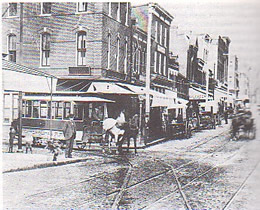
General Overview
Black newspaperman Alexander Manly, perhaps due to
lagging revenue and prone to inflammatory editorials like
the one cited below, was responding to an 1897 speech by
Georgian Rebecca Felton to a Georgia Agricultural Fair
assembly. She decried the rape of white farm women by
black men while their men were working the
fields, and that this crime had become epidemic.
She blamed the Republican party for fostering the belief
among blacks that their crimes would not
be punished. Manly's editorial was seen by
responsible citizens across the State as suggesting
that the rape was somehow consensual and
absolving the criminal.
The following is taken from the DeRosset source,
published in 1938:
"The Wilmington Race Revolution, November 10th, 1898,
was the direct result of ill-advice given Negroes by
unprincipled white Republican leaders. This scurrilous
influence, supplemented with recognition given Negroes,
through minor political offices such as magistrates, police
duties, etc., had made the darkies impudent, and insolent.
The situation finally developed to the point where
white women and children were being insulted,
pushed off the sidewalks into gutters.
The racial break came at the time mentioned above.
As a result, within 48 hours, it resulted in the white race
asserting itself and regaining absolute control of the
municipal and county governments.
The conflict was the direct outcome of the general causes
outlined in the opening paragraph. The principal and
motivating final cause, combine with the general insolence
and overbearing attitude of the Negro race, following
bad counsel which they received and followed,
was a diabolical and defamatory editorial.
This appeared in a Negro daily owned and edited by
a contemptible Negro named F.L Manly.
This defamatory editorial was as follows,
published under date of August 18, 1898:
“Poor white men are careless in the matter of protecting
their women. Especially on the farms. They are careless
of their conduct toward them. Our experience
among poor white people in the country teaches us that
women of that race are not more particular in the matter
of clandestine meetings with colored men than the white
men with colored women. Meetings of this kind go on
for some time until the woman’s infatuation or the
man’s boldness, bring attention to them, and the man is
lynched for rape. Every Negro lynched is called ‘a big
burly black brute.’ In fact, many of those who have
been thus dealt with had white men for their fathers,
and were not only not ‘black’ and ‘burly,’ but were
sufficiently attractive for white girls of culture and
refinement to fall in love with them, as is very
well known to all.”
As indicated, the above defamatory editorial brought
the situation to a climax. The result was that within 48
hours (when the break came about a month following
publication of the editorial) the white men of the city
rose in their wrath and indignation. They overthrew
the then-existing radical, Republican Government and
drove the majority of the Negroes’ white
leaders from the city."
What caused the racial violence?
For the long answer, one needs to start with the end
of the War Between the States and the population impact
on Wilmington of thousands of black refugees who
followed the Northern armies and remained in the city.
After the war those new black residents, as well as
the existing, were drawn into the Republican party of the
North through the Union League organization,
with the purpose of maintaining Republican political
hegemony in North Carolina and the South.
Probably the best short answer is the racial unrest,
still existing since 1865, fueled by the carpetbag and
scalawag political domination of Wilmington -- the latter
supported by the black poplusation and opposed by the
minority white population -- laid the groundwork for
conflict. The radical black newspaper editor Alexander
Manly, who was condemned by responsible black leaders
across the State, printed his editorial and lit the fuse.
Armed black men fired upon white residents
at Fourth and Harnett Streets who were returning from
Manly’s burning newspaper office building and thus began
the violence. Reports of armed blacks marching from nearby
Brunswick County and the black leader of the local
black-dominated Republican Executive Committee
discovered ordering Winchester rifles spread alarm
throughout the white community.
Add to this sad reality the extreme racial polarization of the
1890s that was evidenced by the Republican party in North
Carolina being virtually all black, and the Democrat party being
virtually all white. Those black citizens who voted Democrat
were ostracized and often violently dealt with
by black Republicans.
Did John Dancy Blame Manly for the Violence?
John Dancy was the black Collector of Customs in
Wilmington, a political appointment by the national
Republican party and the highest-paid position in the
State. Being a purely political position, the Collector
was expected to increase party power and authority in
his area. Dancy was well-aware of the Republican party
machinations that increased racial unrest.
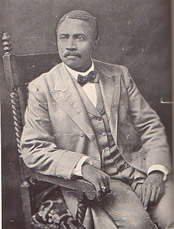
“ . . . John C. Dancy, informed several audiences in New
York [after the conflict] that the Manly editorial was
“the determining factor” in bringing about the riot.
Cyrus D. Bell, editor of the Afro-American Sentinel
in Omaha, Nebraska, also blamed Manly for the
violence. (McDuffie)
“ . . . John C. Dancy, a Negro collector of the customs
at Wilmington . . . denounced the extreme conduct of
members of his race. [Black] Parson Leak of Raleigh
advised the Negroes to stay out of politics and to ally
themselves with good white people. He declared himself
in favor of the disenfranchisement of all illiterate Negroes
and favored the Jim Crow car law. He blamed [Republican
Governor Daniel] Russell for the Wilmington trouble
and other ills, which had brought on race bitterness.”
(Daniels)
Was there an overthrow or Wilmington city government?
No, and there was no "coup" as many uninformed
people claim today. There was indeed a peaceful change in
who was mayor and aldermen, and all was done according to
the letter of the law as established by the Fusion-revised city
charter of 1897 which required new appointments made
after current aldermen voluntarily resigned.
It can be safely assumed that there was significant pressure applied
in the demand that current aldermen resign, and that they no doubt
felt responsible for the deplorable state of racial affairs in the
city at that time. After Mayor Silas Wright voluntarily resigned,
he was replaced by former United States Congressman Alfred
Moore Waddell, a highly-respected Wilmingtonian.
See the following taken from contemporary sources:
"On the evening of the day of this revolution, the mayor and
board of aldermen then in charge of the city of Wilmington
resigned, and their successors were nominated and elected.
Thus there was an entire change in the city government…
we realize that the results of the Revolution of 1898
have indeed been a blessing to the community.”
(Sprunt)
“Tonight the city is in the hands of a new municipal
government and law and order is being established.
This afternoon, the Board of Aldermen resigned one
by one. As each alderman vacated, the remainder
elected a successor named by the citizen’s committee,
until the entire Board was changed legally. They
resigned in response to public sentiment.
The Mayor and Chief of Police then resigned and
the new Board elected successors, according to law.”
(Raleigh News & Observer, November 11, 1898)
The Wilmington Board of Aldermen was not democratically-
elected prior to 1898. Under the new city charter
altered by Russell's Republican fusionists, the Governor
was to appoint half of the city Aldermen with the rest
being locally-elected -- this ensured the election of a
Republican mayor and control of city
government by Republicans.
“Under the provisions of the 1897 [Fusion legislature-
modified city] charter, Republican Governor Daniel Russell
could . . . appoint five Fusionist aldermen to the Board
during the city’s next aldermanic election. Additionally,
the power to appoint the members of the Board of Audit
and Finance still remained in the governor’s hands,
and he would be appointing [5] members of this
[10 member] body in March 1899.” (McDuffie)
“The (Wilmington) Chamber of Commerce adopted
resolutions stressing “that the revolution in the city
government that displaced a weak and incompetent
administration and legally instituted a new and representative
government, was accomplished without violence, and
was the legitimate result of the combined moral
influence of the intelligence and wealth of the community.”
(McDuffie)
What did contemporary accounts of the violence state?
For the most trustworthy source of information about an
event such as this, go to the writings of the time of the
event or shortly afterward. They must be sifted and
compared, but they are all we have as an historical record.
"As some of the white men who had participated in the
march on the Daily Record were making their way home,
they passed through the Brooklyn section of the city . . .
one of the black residential sections of Wilmington.
[S]hooting started coming simultaneously from both
sides. The whites responded with "a volley from shotguns,
Winchester rifles and revolvers." Some of the blacks
returned the fire, and they wounded three whites,
William Mayo, George Piner, and N.B. Chadwick.”
(McDuffie)
“[N]o person was injured until a Negro deliberately and without provocation shot a white man, while others, armed and defiant, occupied the streets, and the result was that about twenty of them were killed and the rest scattered. (Sprunt)
“Bloodshed, as Colonel [Alfred Moore] Waddell stated . . .
was begun by the Negroes, it being the purpose of the
white people to avoid all bloodshed and needless violence.”
(Sprunt)
A Negro printing office was destroyed by a procession of perfectly
sober men, but no person was injured until a Negro deliberately
and without provocation shot a white man, while others, armed and
defiant, occupied the streets, and the result was that about twenty
of them were killed and the rest of them were scattered.
Former Congressman Alfred Moore Waddell
states in his "Memories":
"The history of that event, as was to have been
expected, was grossly misrepresented by that element
of the press and the people of the Northern States
who were ever ready to condemn the white man and
sympathize with the Negro in the South; but the
great majority of people in all parts of the country
justified the movement – if not by expressed
approval at least by abstaining from any
condemnation of it, and a very convincing
evidence of the spirit in which it was regarded
by the Federal authorities was given by their
silence and inaction concerning it."
“About one o’clock some Negroes in a house fired upon
a passing party of white men. The house was surrounded
and four Negroes captured and taken to jail.”
(Fayetteville Observer)
“The dead victims of the riot, all Negroes, were buried
yesterday. There were six of them.” (Fayetteville Observer)
“(E)leven Negroes had been killed and nine
Negroes and nine white men wounded.” (Daniels)
“The actual outbreak, resulting in loss of life, happened
in the northern section of the city, early in the afternoon.
A Negro fired into a crowd of white men, standing
near the corner of Fourth and Harnett Streets.
One white man was seriously wounded. Later,
another was shot and painfully hurt. During the
turbulence and conflict which resulted, it was
estimated that from seven to ten Negroes
were killed.” (DeRosset)
What happened after the initial violent clash?
“In an effort to disarm the city’s blacks, [Col.]
Walker Taylor detailed a detachment of the WLI
[Wilmington Light Infantry] and the Naval Reserves
to search some of the black churches. It was rumored
that these black churches were stacked with arms and
that black men were hiding there waiting for the
opportune time to strike . . . [and] that there were . . .
300 to 500 “fully armed” blacks advancing on
Wilmington from adjoining Brunswick County.”
(McDuffie)
“Martial law has been enforced all night. All Negroes
are stopped, searched and escorted to home. The Armory
is decorated with a motley collection of weapons:
Winchesters, razors, pistols and guns of every
description have been taken from the Negroes.”
(Fayetteville Observer)
Was the 1898 conflict the first such event in Wilmington?
No. The first occured in the early 1870s when Northern
political opportunists agitated black residents to violence.
Consider the following:
“In the early [1870s], when Wilmington and New Hanover
County were absolutely under the control of a large
Negro population, which had drifted there from South
Carolina and other parts of the country, attracted by
the Freedmen’s Bureau, a national institution that gave
rations and clothing to the recently emancipated slaves;
a howling mob of Negroes, being led by a notorious
white man by the name of James Heaton, seized and took
possession of the town; several thousands of the mob
smashing windows, ruining property, and were about to
set fire to the town.
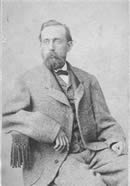
Alfred Waddell, calling together a handful – hardly
more than a hundred – of brave and fearless men,
with a gun in his hand, led a charge on the large mob
of Negroes, put it to flight, and in less than an hour
drove the rioters to their homes and restored order.
The weak and pusillanimous government continued
to function once more in peace.”
Again, in 1898, under similar circumstances, he called
on and drove out of office the weakling, Mayor Silas
Wright, an old-time carpetbagger, and in a most skillful
manner – under the form of law but in terrorem – made
each officer resign seriatim, filling his place with a
reputable citizen and property holder, one by one,
until an entirely new board of aldermen and officers
were placed in charge of city government, and the
former disreputable member expelled from the town,
never to return again. Colonel Waddell
was elected mayor . . . “ (Bellamy, pg. 72)
What role did Alfred Moore Waddell play in the conflict?
Waddell was a prominent Wilmingtonian and former US Congressman
who was well-respected by both white and black residents. He defused
a previous riot of black residents mentioned above. He spoke to Wilmington residents in November 1898 regarding the difficult
conditions that prevailed in the city and were caused by
Gov. Daniel Russell's administration..
“Colonel Alfred Moore Waddell’s speech, which was
in line with Guthrie’s -- they were the high-water marks
of the [Goldsboro White Supremacy campaign]
convention -- was mainly devoted to vivid word pictures
of conditions in Wilmington. He detailed the intolerable
conditions which compelled even ministers of the
Gospel to patrol the streets at night to
protect their homes.
“We are going,” declared Waddell, “to protect our
firesides and our loved ones or we will die in the
attempt, and I don’t say that for the purpose of
winding up in an oratorical flight. That determination
is in the minds of the white men of Wilmington and
we intend to carry it out.”
He declared that the Wilmington people would drive out
the Manley’s and the Russell’s and the horde
of corruptionists . . . “ (Daniels)
Is Leon Prather's “We Have Taken a City” a credible account?
Not according to historians familiar with the historical record of
the 1898 conflict. Lower Cape Fear Historical Society Archivist
Diane Cashman wrote the following in 1985 after receiving an
advanced copy of “We Have Taken a City”:
“ . . . I am distressed at [Prather’s] poor documentation.
He overlooked several scholarly works available at
UNC-W and on page 17 states; “no slave revolt
occurred in the state of North Carolina.” A recent
N.C. Historical Review graphically described t
he slave up-risings in antebellum N.C. Seems odd
that a scholar would miss that gory bit of local
history.” (Cashman letter, 24 April 1985)
“I confess that I have not completed your book yet,
but . . . when I started reading it I was a bit alarmed at
errors I found. First, I went to the bibliography and
noted at once that many sources here in Wilmington
were overlooked. There are also errors in names.
In the introductory chapter you make the blanket
statement that N.C. had no slave uprisings. Enclosed
are a few pages on the subject which would
make it appear otherwise.”
(Cashman letter, 16 May 1985)
How did Republican Gov. Daniel Russell affect the conflict?
Russell was elected in 1896 by the “fusion” votes of
black Republicans and farmer Populists, all promised
shared power and influence in his administration. As a
political payoff for delivering the votes of black
North Carolinians, Russell appointed many blacks
to government positions.
“Among [Governor] Russell’s first acts as governor
was a full pardon of John Statcher, a leading Negro
politician and henchman of the Russell-Manning clique.
Statcher was a [Wilmington] policeman found guilty
of robbing a store in Wilmington, at night, while on
his beat; he had been caught in the act.”
(Bellamy, pg. 120)
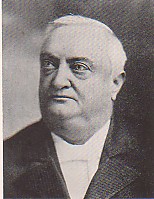
How did Gov. Russell's administration come to power?
Russell was seen as a cunning political opportunist and greatly disliked
by the Republican party in North Carolina and could never have
become governor as a Republican -- he won the postion with the support of black Republicans and the newly-formed Populist farmers which
was called "Fusion." The intent of this political movement was to
restructure State political affairs to prevent Democrats from regaining political ascendancy. Ironically, they established the new Wilmington
city charter which was followed to the letter by white Wilmingtonians
who achieved a new and responsible city government
in November 1898.
“[I]n 1894, the Populists and Republicans fused their
interests and not only elected several congressmen
and judges, but, what was far more important,
captured the Legislature. In 1896, by the same
methods, they secured control of all three
branches of the State government and of many
of the Counties.
The basis of their control was the solid Negro vote
estimated at from 120,000 to 125,000. Thus, the
people of North Carolina were to see tested again
the experiment which had failed during the days
of Reconstruction---the effort of a party composed
chiefly of a Negro constituency to provide good
government for a Commonwealth founded
upon an Anglo-Saxon civilization.
Coming to power upon a distinct pledge to restore
local self-government to the people of the State,
the Fusionists proceeded to carry this pledge into
execution. An act (entitled “An act to restore to
the people of North Carolina local self-government)
was passed which overturned the system of County
government then in operation.
Whether so intended or not, the new system turned over
to the Negro rule the chief city of the State, several
important towns and many of the eastern Counties.
Then the country saw repeated the scenes which
have made the memory of Reconstruction a
nightmare to the people of the South.
Negro politicians, often illiterate, always ignorant,
always corrupt, presided over the inferior courts,
dominated County school boards and district school
committees, and served as County Commissioners
and City Councilmen.
They were found on the police force of the State’s
chief city, they were made City Attorneys, and they
were numbered among the County coroners, deputy
sheriffs, and registers of deed. Lawlessness, violence
and corruption followed.
In some of the Counties the situation became
unbearable while in such towns as Wilmington,
New Bern and Greenville neither life, nor property,
nor woman’s honor was secure.
Governor Aycock did not exaggerate the situation
when in his inaugural address, he declared that during
those years of Negro rule “lawlessness walked
the State like a pestilence---death stalked abroad
at noonday—“-sleep lay down armed”, the sound
of the pistol was more frequent than the song of
the mockingbird---the screams of women, fleeing
from pursuing brutes closed the gates of our
hearts with a shock.”
(Conner/Poe)
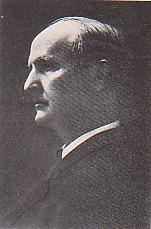
What concerned white voters about “Black domination?”
“The historian will not undertake to say that the party
in power intended to produce this condition of affairs,
but he will say that Governor Aycock was right in his
analysis of the situation when he declared: “we have had
but two periods of Republican rule in North
Carolina---from 1868 to 1870, and from 1896
to 1898. That party contains a large number of
respectable white men, but the Negro constitutes
two thirds of its voting strength. Government can
never be better nor wiser than the average of the
virtue and intelligence of the party that governs.”
(Conner/Poe, Doubleday)
Why was the Republican party in NC all black in the 1890s?
“The Republican party in all the Negro belt is weaker today
than it has ever been since the day of its birth on
Southern soil. It is hard to find one young white man of
ability and promise who admits himself to be a
Republican. Many of the best federal offices have
been given to colored men, although it might have been
simple justice to recognize all elements in the distribution
of party rewards, the administration has been misled
by unscrupulous politicians into appointing black
men whose conduct makes them offensive to
the white people of their communities.
Until recently . . . the colored people have been
disposed to invite the leadership of respectable white
men. But now, the tendency is towards the elevation
of the most corrupt Negro element to control of the
party in the black counties . . . In places the GOP was
nothing more than a Negro party and “there is scarcely
a precinct in the black belt where you can find active
white Republicans enough to obtain even the semblance
of a fair election. Our adherence to the fundamental
principles of Republicanism cannot be weakened by
the conduct of corrupt and venal upstarts who want
to keep honest white men out of the party.”
(Raleigh Signal, April 7, 1892, Address of Leading
White Republicans, Daniel L. Russell & George W. Stanton)
Why the black disenfranchisement of black voters?
Though a desperate measure after the 1898 violence to solve
what white leaders deemed a serious problem, they saw
the removal of black voting rights as a way to strip the
Republican party of its dependable black voter base.
Their stated strategy was to educate black North
Carolinians in the responsibilites associated with the
franchise and not sell their votes to the Republican party
for petty political offices.
Their aim was to restore the black franschise once their
political education was complete. The Democrat/Conservative
party was not without political sin or corruption, but the view
from today can see the political machinations between two
political parties vying for control and once in power, to take
measures to keep the other from ewver returning to power.
This does not justify what occured, and the historian can only
review the evidence and explain what occured and why --
and avoid at all costs judging the past from today's
sensibilites and standards..
Was there an overthrow or Wilmington city government?
"On the evening of the day of this revolution, the mayor and
board of aldermen then in charge of the city of Wilmington
resigned, and their successors were nominated and elected.
Thus there was an entire change in the city government…
we realize that the results of the Revolution of 1898
have indeed been a blessing to the community.”
(Sprunt)
“Tonight the city is in the hands of a new municipal
government and law and order is being established.
This afternoon, the Board of Aldermen resigned one
by one. As each alderman vacated, the remainder
elected a successor named by the citizen’s committee,
until the entire Board was changed legally. They
resigned in response to public sentiment.
The Mayor and Chief of Police then resigned and
the new Board elected successors, according to law.”
(Raleigh News & Observer, November 11, 1898)
The Wilmington Board of Aldermen was not democratically-
elected prior to 1898. Under the new city charter
altered by Russell's Republican fusionists, the Governor
was to appoint half of the city Aldermen with the rest
being locally-elected -- this ensured the election of a
Republican mayor and control of city
government by Republicans.
“Under the provisions of the 1897 [Fusion legislature-
modified city] charter, Republican Governor Daniel Russell
could…appoint five Fusionist aldermen to the Board
during the city’s next aldermanic election. Additionally,
the power to appoint the members of the Board of Audit
and Finance still remained in the governor’s hands,
and he would be appointing [5] members of this
[10 member] body in March 1899.” (McDuffie)
“The (Wilmington) Chamber of Commerce adopted
resolutions stressing “that the revolution in the city
government that displaced a weak and incompetent
administration and legally instituted a new and representative
government, was accomplished without violence, and
was the legitimate result of the combined moral
influence of the intelligence and wealth of the community.”
(McDuffie)
Did “thousands of black citizens” flee the city?
It is logical that the majority of black Wilmingtonians
adhered to the Republican party and shared in the
patronage and administration of Governor Russell,
which was offensive to white Wilmingtonians. Therefore,
many black residents who were prominent in the local
Republican party fled the city after the violence.
“The [Wilmington] Morning Star estimated in
July, 1899, that over one thousand blacks had left
the city since the previous November.
Although it is impossible to determine the number
of blacks who had left Wilmington as a result
[of the conflict] . . . there was a decrease of 826
or 5.9% from 1890 to 1900.”
(McDuffie)
“Mayor Waddell today sent a number of well-known
Negroes through the woods adjacent to the city the
reassure the hundreds of Negroes hiding in all directions.
An effort is made to get them to return to their homes by
assuring them that they will not be harmed if they go
quietly about their work and maintain an
inoffensive deportment.”
(Fayetteville Observer)
“On November 11, almost immediately after the
election, the Wilmington people determined to be
rid of the men who had conducted a government
bordering on anarchy.”(Daniels)
Were white and black Republicans ejected from the city?
Again, white Wilmingtonians felt that the local Republican
leadership and Gov. Russell were responsible for the
racial unrest and subsequent violence in Wilmington.
“On November 11, almost immediately after the election,
the Wilmington people determined to be rid of the men
who had conducted a government bordering on anarchy.
They---the Cape Fear Vigilantes, though they did not
give themselves that name---gave notice, after eleven
Negroes had been killed and nine Negroes and nine
white men wounded, that the men who had been
responsible for the bad government and race troubles
should leave the city.
Among these was G.Z. (Gizzard) French, white
carpet-bagger, who had been State Senator, the author
of the law that put Wilmington government under the rule
of the Negroes and their allies. He and the others were
escorted to the train by a squad of white militia with fixed
bayonets. It was believed that French went to Washington.
Carter Beaman, colored, went to South Carolina;
Tom Miller, Pickens Bell, Aaron Bryant and
Rev. I.J. Bell were put on the train
and told never to return.
They also ran out of town Trial Justice R.H. Bunting,
ex-Chief of Police John R. Melton, Charles McAllister,
Isaac Loftin, colored, and an ex-policeman. These men
went to New Bern but were not allowed to remain there
and had to move on. Loftin and McAllister had
sold firearms to the Negroes. R.B. Reardon
and W.E. Henderson, Negroes, fled before being
run out of town. Some of them who were driven
out of Wilmington located at Richmond and
the Richmond authorities notified them that
they were not wanted.
Manley was said to have gone to New Bern but
could not be found there. He seemed to have
disappeared off the face of the earth, but later
the Washington Star published an interview with
a man claiming to be Manley, who denounced
the Wilmington people and the people of North
Carolina in vigorous terms. It probably was Manley.”
(Daniels)
Did Black Wilmingtonian’s Suffered Property Loss?
The first of its kind on the 1898 incident and currently
the most authoritive, Mrs. Cody’s study used tax records,
deeds and city directories before and after the incident.
“Simply put,” she wrote, “no cases of property seizures
were found. Dr. McLaurin… UNCW history professor…
called her research “rock solid.”
(Wilmington Star News, June 4, 2000)
“Word of widespread property theft has been a
staple of the 1898 legacy. In 1998, historian Leon F. Litwack
wrote that nearly 1500 blacks, “most of them propertied,
chose to leave the city; whites moved quickly to confiscate
their property for unpaid taxes.”
Mrs. Cody’s research contradicts that claim, which
others had voiced before Mr. Litwack. Although Mrs.
Cody found several cases in which blacks sold their
property at a loss, others held onto their properties
and made money on them after the riots, according
to her research.” (Star News, June 4, 2000)
When did the racial tension subside after the conflict?
The following is an illuminating commentary of the racial
conflict in North Carolina which ended in
violence in Wilmington.
“A day or two after the election, the Negro State Fair
was held in Raleigh. The Negro manager had invited
Governor Russell to open the fair, but he declined
the invitation. On the morning of the opening of the fair,
Parson Leak, Methodist preacher who had been a
Republican leader in 1894 and 1896, but who had
broken with Jim Young and the other Negro leaders in
1898, came by and asked me to make a speech
opening the fair. I told the parson that in view of
my activity in the white supremacy campaign,
I felt that the Negroes might not relish my addressing them.
“On the contrary,” he said, “this old rascal [Russell]
who is up in the Governor’s mansion, who has gotten
everything he has from Negroes, has been ungrateful.
They have no respect for him. They know that at heart
you are their friend and they need somebody who was
a leader of the white supremacy campaign to give
them assurance of friendship and protection.
You are the very man they want.”
And so I went out and opened the Negro Fair.
The Negroes had assembled in great numbers. I tried to
voice to them the genuine friendship which the leaders of
white supremacy felt for them and pointed out that it
was a campaign not directed at the law-abiding and
industrious Negro, but at the Negro slave-drivers
of which Russell was at the head, and assured them
that the day of election for them was really a day
of emancipation from corrupt party leaders.
The Negro leaders followed---Professor Bruce, of Shaw
University, and John C. Dancy, collector of customs at
Wilmington, and other wise Negroes---and counseled
peace and acceptance of the situation, so that in a few
days the State was as quiet as if there had never
been a heated campaign.”
(Daniels)
More Coming -- This Page Under Construction!
©2006 Cape Fear Historical Institute